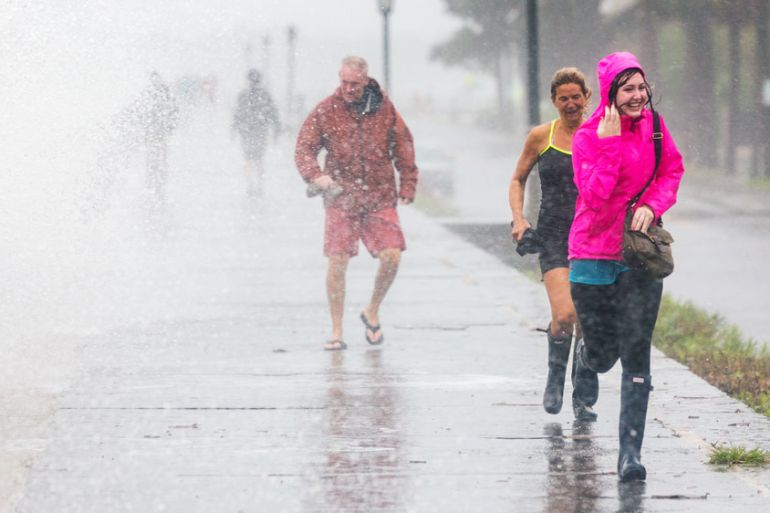Deadly floods hit South Carolina
The southern US state has seen its heaviest rain in 145 years.

At least three people are known to have died in South Carolina in the worst flooding in living memory. Emergency services have been inundated with more than 700 requests for assistance.
The city of Charleston bore the brunt of the precipitation, although during Sunday the heaviest of the rain transferred northwards to affect the area from Columbia to Myrtle Beach.
Keep reading
list of 4 itemsChina evacuates over 100,000 as heavy rain continues to lash south
Asia bears biggest climate-change brunt amid extreme weather: WMO
Photos: Highest-level rainstorm warning issued in south China’s Guangdong
“The city of Georgetown is predominantly under water,” the city’s fire chief was quoted as saying.
Nikki Haley, South Carolina’s governor, had this to say about the floods: “When you think about what we’re sitting in right now, we are at a thousand year level of rain in parts of the low country. What does that mean? We haven’t seen this level of rain in the low country in a thousand years. That’s how big this is.”
Haley’s comment is based on data analysis from the National Oceanic and Atmospheric Administration (NOAA).
This suggests that every thousand years Charleston can expect to see a three-day rainfall total of 434mm.
In fact, between Thursday and Saturday, 368mm of rain fell at Charleston airport. Of this, 292mm fell on Saturday alone. But there are unofficial reports of 615mm within Charleston County.
In the same period, downtown Charleston recorded 351mm, the highest three-day total since records began in 1870.
The causes of the rain are complex. It is not directly linked to Hurricane Joaquin, which passed close to the eastern seaboard before heading off into the Atlantic.
Instead, an area of low pressure lying 5,000m above the southeastern US has coincided with a cold front.
Nevertheless, Joaquin is thought to have helped in the circulation of moist, tropical air around its eastern and northern flank, pushing it across the Carolinas.
This resulted in what meteorologists refer to as an “atmospheric river”, which gave an almost endless supply of moisture.
Forecasts suggest parts of South Carolina could receive another 100mm before the rain finally eases off.